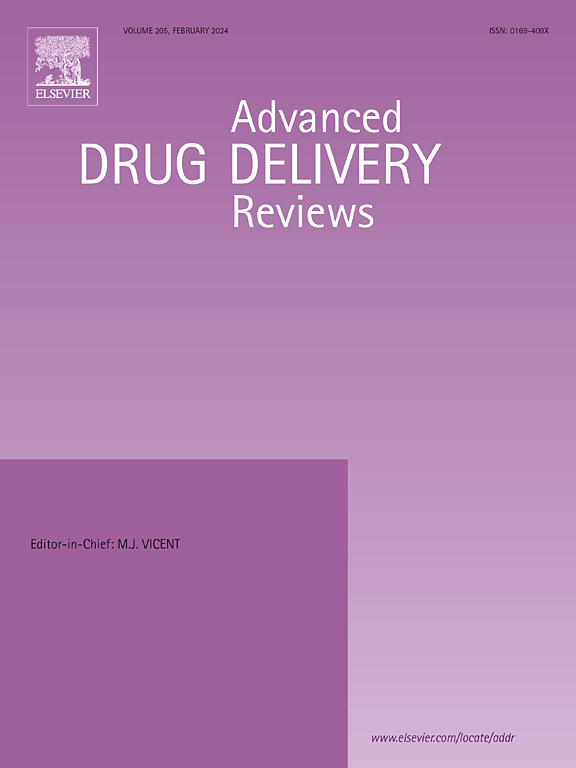Intranasal NAP (Davunetide): Neuroprotection and circadian rhythmicity
IF 17.6
1区 医学
Q1 PHARMACOLOGY & PHARMACY
引用次数: 0
Abstract
In this review we examine the neuroprotective potential of NAP (davunetide), a small peptide derived from Activity-Dependent Neuroprotective Protein (ADNP), in the context of neurodevelopmental and neurodegenerative disorders. ADNP, a protein essential for brain development and function, is associated with tauopathy-related diseases, such as Alzheimer’s Disease (AD), and circadian rhythm regulation. NAP enhances microtubule stability and prevents tauopathy. In preclinical studies, NAP shows promise in improving cognitive performance and correcting behavioral deficits in different models. Clinical studies on NAP (davunetide) administered via intranasal delivery have demonstrated its safety, favorable bioavailability, and potential efficacy in improving cognitive function, making it a viable therapeutic option. In the pure tauopathy, progressive supranuclear palsy, NAP (davunetide) significantly slowed disease progression in women in a phase II-III clinical trial. Additionally, the complex interactions between ADNP, associated pathways, and circadian regulation and the extensive NAP compensation upon ADNP deficiency attest to further clinical development. Thus, NAP is an example of a reductionist approach in drug delivery, replacing/enhancing the critical large ADNP-related pathways including dysregulated microtubules and tauopathy with a small brain bioavailable investigational drug, davunetide.


鼻内NAP(达文尼肽):神经保护和昼夜节律
在这篇综述中,我们研究了NAP(达文尼肽)在神经发育和神经退行性疾病中的神经保护潜力,NAP是一种从活性依赖性神经保护蛋白(ADNP)中提取的小肽。ADNP是大脑发育和功能所必需的蛋白质,与牛头病相关疾病(如阿尔茨海默病(AD))和昼夜节律调节有关。NAP增强微管稳定性,防止牛头病。在临床前研究中,NAP在不同模型中显示出改善认知表现和纠正行为缺陷的希望。经鼻给药NAP(达文尼肽)的临床研究已经证明其安全性、良好的生物利用度和改善认知功能的潜在功效,使其成为一种可行的治疗选择。在一项II-III期临床试验中,在纯tau病、进行性核上性麻痹患者中,NAP(达文尼肽)显著减缓了女性疾病进展。此外,ADNP、相关通路和昼夜节律调节之间的复杂相互作用以及ADNP缺乏时广泛的NAP补偿证明了进一步的临床开发。因此,NAP是药物传递中还原论方法的一个例子,用一种小脑生物可用性研究药物达文尼肽取代/增强adnp相关的关键大通路,包括失调的微管和tau病变。
本文章由计算机程序翻译,如有差异,请以英文原文为准。
求助全文
约1分钟内获得全文
求助全文
来源期刊
CiteScore
28.10
自引率
5.00%
发文量
294
审稿时长
15.1 weeks
期刊介绍:
The aim of the Journal is to provide a forum for the critical analysis of advanced drug and gene delivery systems and their applications in human and veterinary medicine. The Journal has a broad scope, covering the key issues for effective drug and gene delivery, from administration to site-specific delivery.
In general, the Journal publishes review articles in a Theme Issue format. Each Theme Issue provides a comprehensive and critical examination of current and emerging research on the design and development of advanced drug and gene delivery systems and their application to experimental and clinical therapeutics. The goal is to illustrate the pivotal role of a multidisciplinary approach to modern drug delivery, encompassing the application of sound biological and physicochemical principles to the engineering of drug delivery systems to meet the therapeutic need at hand. Importantly the Editorial Team of ADDR asks that the authors effectively window the extensive volume of literature, pick the important contributions and explain their importance, produce a forward looking identification of the challenges facing the field and produce a Conclusions section with expert recommendations to address the issues.

 求助内容:
求助内容: 应助结果提醒方式:
应助结果提醒方式:


